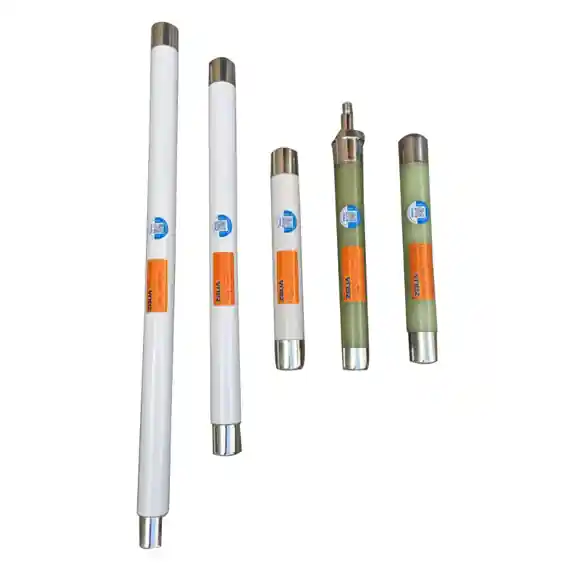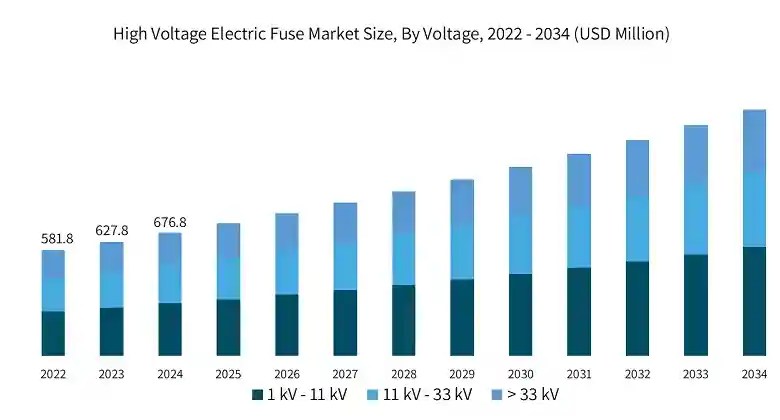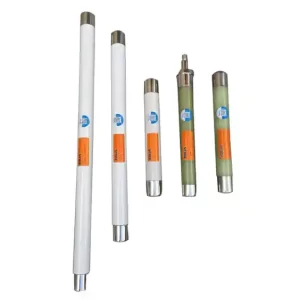Fuses are a critical line of defense in electrical systems, protecting circuits and equipment from overcurrent conditions. In the context of modern power networks, understanding the differences between Low Voltage (LV) and High Voltage (HV) fuses is essential for engineers, installers, and energy planners. Though both serve the same core function—breaking the circuit during fault conditions—their construction, performance, and application environments vary significantly.
Core Concept: What Are LV and HV Fuses?
Low Voltage fuses are typically used in circuits with voltages below 1,000V AC. These fuses are common in residential, commercial, and light industrial settings.
High Voltage fuses, on the other hand, are designed to operate in circuits above 1,000V, often up to 72.5kV or higher. These are used in utility-scale, industrial, and substation-level applications.

Application Areas and Use Cases
LV Fuses
- Residential distribution panels
- Motor starters and contactors
- Commercial switchboards
- Low-voltage lighting and HVAC systems
HV Fuses
- Distribution substations and ring main units (RMUs)
- Power transformers (11kV, 33kV, etc.)
- Medium- and high-voltage capacitor banks
- Renewable energy inverters and switchgear
Technical Differences
| Feature | LV Fuse | HV Fuse |
|---|---|---|
| Voltage Rating | Up to 1,000V AC/DC | Above 1,000V (up to 72.5kV or more) |
| Body Material | Plastic, glass, or ceramic | Porcelain, epoxy resin, or composite |
| Arc Interruption Method | Metal link melting | Sand-filled or gas expulsion |
| Size and Mounting | Compact, cartridge-style | Elongated, bolt-in or plug-in type |
| Maintenance Requirements | Tool-less replacement | Specialized PPE and arc-flash handling |
Market Insights and Standardization
According to IEEE, IEC, and IEEMA, global trends indicate a steady increase in demand for HV fuses driven by utility modernization and renewable grid integration.
- LV fuses are governed by IEC 60269 and UL 248
- HV fuses follow IEC 60282-1, IEEE C37.40, and ANSI C37.46
Leading brands like ABB, Schneider Electric, SIBA, and Eaton continue to advance both categories by introducing fuses with improved arc-quenching materials, modular installation options, and smart-fuse diagnostics.

Design Considerations and Product Selection
When selecting the appropriate fuse type, several factors should be evaluated:
- System voltage and current
- Short-circuit interrupting capacity
- Environmental conditions (e.g., temperature, humidity)
- Size constraints and installation layout
- Standards compliance and testing certificates
For example, current-limiting HV fuses are ideal for compact switchgear where fault energy must be controlled, while LV time-delay fuses may be used for motors subject to inrush currents.
Key Differences Summarized
- Voltage Rating: LV = up to 1,000V; HV = above 1,000V
- Installation: LV = quick-mount; HV = industrial/substation-grade
- Arc Management: LV = melting elements; HV = sand or gas-based quenching
- Cost & Complexity: HV fuses require stricter handling and insulation design
Frequently Asked Questions (FAQ)
A: No. HV fuses are designed for different dielectric and thermal conditions and are not suitable or safe for LV applications.
A: Not necessarily. Both LV and HV fuses are available in fast-acting and time-delay variants, depending on the application.
A: Yes. Fuses are sacrificial devices that must be replaced after interrupting a fault.
The difference between LV and HV fuses lies not only in voltage class but in structural design, safety requirements, and application suitability. Choosing the right fuse ensures equipment longevity, grid stability, and personnel safety. For applications ranging from commercial buildings to utility substations, fuse selection must align with international standards and technical parameters.
PINEELE offers a complete range of certified LV and HV fuse products for global electrical infrastructure projects, with proven performance across 30+ countries.

